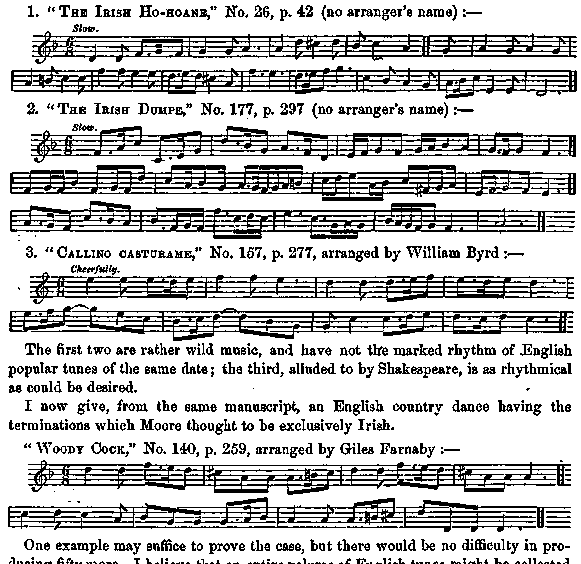Popular Music Of The Olden Time Vol 2
Ancient Songs, Ballads, & Dance Tunes, Sheet Music & Lyrics - online book
| Share page | Visit Us On FB |
|
|
|||
|
AND SUMMARY. |
793 |
||
|
|
|||
|
as national characteristics; for, although certain closes may prevail over others in a nation, it is very difficult to assign an exclusive right to any. The fashion of the age,—the character of the words,—the style of the song, have all their influences. A bass voice will drop a fifth, and it will be one way on one instrument and another on another. Certain tunes finish on the second of the key,—others on the fourth ; but it is really because they are w»finished,—intended to be repeated. Some end on the third and fifth, from fancy, or from having a monosyllable at the end, like " Sir," in TTie Baffled Knight (p. 520). I do not now think that any rules are to be given which will not be open to many exceptions.
Moore has claimed several airs as Irish, because they have the repetition, tum-tum, or tum-tum-tum, on the same note at the end,—and this when even in opposition to all external evidence. There are undoubtedly many Irish airs that have that termination, but it is by no means a peculiarity. Although long out of fashion with English musicians, there are numberless such tunes still to be heard among the lower orders. It was a common country-dance ending in the reign of Queen Elizabeth, and remained so till within the last twenty years. If we look to the earliest Irish tunes, it is not to be found,—yet English of the same date have it. For instance, in Queen Elizabeth's Virginal Book, there are three Irish airs which, having never been quoted or printed, I now submit to my readers. The manuscript contains but three. |
|||
|
|
|||
 |
|||